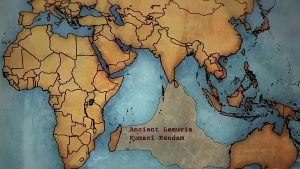

The history of Sri Lankan Tamils is rich and complex, stretching back thousands of years. While not all of it is documented through written records, they are believed to be one of the island’s earliest inhabitants, with strong historical ties to South India, particularly to the Chola, Pandya, and Chera dynasties.
Key Historical Events:
- Ancient Period:
There were long-standing trade, cultural, and religious exchanges between the Tamils and the Sinhalese. Tamil influence in Sri Lanka became significant, especially under the Chola Empire, which ruled over parts of the island during its peak.
The Anuradhapura period saw interactions and conflicts between the Tamil kingdoms of South India and the Sinhalese rulers.
- Chola Rule (10th-11th Century):
During the Chola Empire’s expansion under kings like Raja Raja Chola and Rajendra Chola, parts of northern and northeastern Sri Lanka were conquered and administered by the Cholas. This strengthened Tamil settlement in these regions.
The Cholas left a lasting legacy in the form of temples, culture, and language in northern Sri Lanka.
- Tamil Kingdoms and Rise of Jaffna:
After the decline of Chola influence, the Tamil kingdom of Jaffna rose to power in the northern part of Sri Lanka during the 13th century. This kingdom remained independent for several centuries, fostering Tamil culture and governance.
- Colonial Era:
From the 16th century, Portuguese, Dutch, and later British colonial powers took control of Sri Lanka. During British rule (early 19th century), many Tamil laborers were brought from South India to work on tea plantations in central Sri Lanka, forming the “Indian Tamils” or “Upcountry Tamils.”
Sri Lankan Tamils, meanwhile, played significant roles in administration and education under British rule.
- Post-Independence and Ethnic Tensions:
After Sri Lanka gained independence in 1948, ethnic tensions between the majority Sinhalese and minority Tamils began to intensify. Laws favoring the Sinhalese, such as the 1956 Sinhala Only Act, which made Sinhala the sole official language, marginalized Tamil-speaking communities.
Economic and educational discrimination led to growing discontent among the Tamil population, who began to demand more political autonomy.
- Rise of Tamil Separatism:
By the 1970s, continued ethnic tensions and discrimination led to the emergence of Tamil political movements calling for a separate Tamil state, known as Tamil Eelam.
The Liberation Tigers of Tamil Eelam (LTTE), founded in 1976 by Velupillai Prabhakaran, became the most prominent Tamil militant organization. They sought to create an independent Tamil state in the north and east of Sri Lanka through armed struggle.
- Sri Lankan Civil War:
The civil war officially began in 1983 after a violent anti-Tamil pogrom, known as “Black July,” triggered widespread violence. The LTTE controlled large parts of northern Sri Lanka and engaged in a protracted conflict with the Sri Lankan government.
The civil war saw numerous human rights abuses, mass displacements, and loss of life on both sides. It lasted for nearly 26 years, severely impacting the Tamil population in the north and east.
- End of the Civil War:
In 2009, after a brutal military campaign, the Sri Lankan government declared victory over the LTTE, effectively ending the civil war. The war’s final stages were marked by heavy casualties, with tens of thousands of Tamil civilians killed or displaced. Many LTTE leaders, including Prabhakaran, were killed.
The post-war period was characterized by large-scale displacement of Tamils, military occupation of Tamil areas, and allegations of war crimes, with calls for international investigations into human rights violations.
- Post-War Period:
After the war, efforts at rebuilding and resettlement began, though Tamils continued to face economic, social, and political challenges. Land disputes, resettlement of internally displaced people (IDPs), and the dominance of the military in the north and east created further tensions.
Although there have been calls for reconciliation and political autonomy, progress has been slow, and Tamil demands for greater self-rule remain largely unaddressed.
- Present-Day Challenges and Future:
Today, Sri Lankan Tamils continue to face challenges, including demands for political autonomy, issues around displaced populations, and economic hardships, especially in the northern and eastern provinces. Political efforts by Tamil parties continue to push for devolution of powers to Tamil-majority regions.
Tamil culture, language, and identity remain strong, with the Tamil diaspora also playing a significant role in advocating for Tamil rights on the global stage.
Culture, Religion, and Identity:
Sri Lankan Tamils primarily speak Tamil and have a rich cultural heritage closely tied to South Indian Tamil traditions. Their contributions to Tamil literature, art, and music are significant.
Most Sri Lankan Tamils practice Hinduism, with smaller populations adhering to Christianity and Islam.
The history of the Sri Lankan Tamils is deeply intertwined with the island’s broader historical, political, and social developments. Despite facing immense challenges, their resilience in preserving their culture and identity continues to be a defining feature of their community.